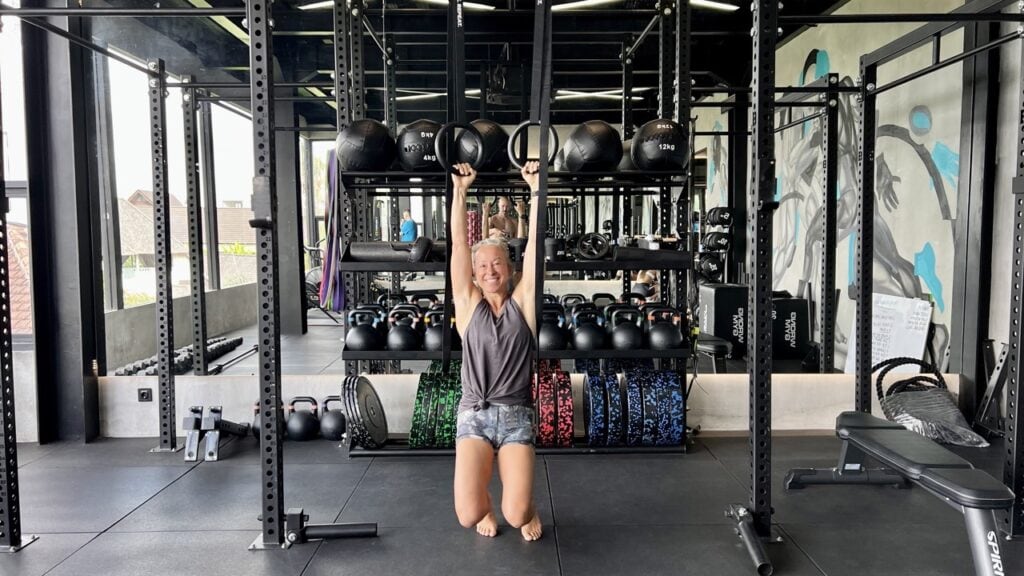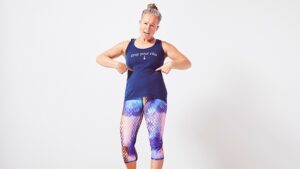If you’re new here, you might not know that I spent the last two years living in a Toyota 4Runner. Up until the Pandemic hit, we were camping and travelling our way down south, as slowly as possible.
We had just made it to Playa La Saladita near Ixtapa and I was working on my surfing when the world went nuts and we decided it would be safer to shelter in Canada. Since our house in Toronto is fully rented out, we flew to Calgary and have been living at my mother’s place while we wait to see what happens.
As much as we’d like to get back to our original plan, there are lots of silver linings to this situation. I’ve been able to spend some serious quality time with my mother. Hot running water’s really lovely. And now that the snow’s mostly melted up high, we’re getting lots of amazing Rockies hiking. Plus we installed a hanging bar in the garage.
Hanging and swinging are some of my favourite natural movement patterns and it’s really hard to hang unless you have access to the equipment. So now that we have a bar, I’ve been getting some hanging in every single day and my shoulders are feeling amazing. In today’s post, I’m sharing my key tips for how you can start or build your own hanging practice.
Why Is Hanging So Great?
‘Hanging’ isn’t exactly a technical term – it’s more of an umbrella to describe a huge category of movements that you can do on a bar or a branch. It can be the foundation for swinging and climbing, or just hanging can be the end goal. It’s also a great tool if you want to improve your pull-up abilities. There are so many ways to hang, but they all have similar benefits.
Here’s the thing. Your shoulders were made to do a lot more than type. Shoulders have a huge potential range of motion and it’s there to be used. Most of us don’t use it, especially what’s above our heads. So hanging is a really brilliant way to give our shoulders the movement they need and has all kinds of other benefits as well. Here’s a quick list (but if you want details, here’s a blog post I wrote that spells this out in more detail).
Here’s what hanging does for you:
👉 Helps build and maintain healthy, strong shoulders
👉 Improves core strength
👉 Improves spinal alignment and decreases hyperkyphosis
👉 Nurtures better lung and heart function
👉 Increases bone density in your wrists
👉 Improves grip strength
👉 Stretches and strengthens your lats
👉 Can decrease shoulder pain and improve function
👉 It feels great and is super fun
What Equipment Do You Need?
You don’t need anything fancy to start hanging. We literally use a strong branch that we found and some rope, and we hung it in the garage on a beam. I like it because it’s long, so we have more room to play, and it was cheap and won’t end up in landfill. Gym rings are another great option, and so is a convenient tree branch. Or you can get fancy and build yourself a back yard ninja warrior course – the sky really is the limit. But my preference is something simple and easy because the most important step is STARTING!
But get an overhead bar. You’ll thank me for this, I promise!
Here’s How To Hang
Hanging is definitely not rocket science. But there are a few tips that can make it way better for your body.
First, you need to respect your current shoulder range of motion. If you don’t have range at your shoulders (and most of us are pretty limited), you’ll compensate with your spine and that’s not great. This means you need to identify your actual shoulder range and stay within it (and it would be a great idea to start working on your shoulder mobility too).
Second, you need to progress slowly and carefully. Hanging is HARD. It’s a big load for some small stuff like our finger tendons. So the smart thing to do is to go slow, build up time and frequency with lower loads, and support your hanging with exercises designed to improve shoulder mobility and function. This chest and shoulder class from my Take10 membership program would be a nice option.
And third, you’re gonna get bored (and miss out on the benefits) if you just do a regular old dead hang all the time. In my personal hanging practice, I’ll set a 5 minute timer and then play with a bunch of variations. It works great! (I’d start with maybe a minute or two, not five, and build from there).
Not sure what this could look like? No worries, my friend, I’ve got you covered. Here’s a mini class that’s packed with everything you need to know to hang like a pro!
Want More Resources?
There’s so much fun stuff you can do when you have a hanging bar, rings, or a good tree! I hope this gave you lots of great ideas to get you started! My favourite way to hang is definitely side to side swinging…or maybe it’s hanging with one hand and getting that amazing side stretch/breathing time in! There’s so much to love!
I believe that hanging is one of the top three movement categories most modern humans need and are missing. But, before you jump right into hanging, you want to make sure your ribcage is in the right position. Believe it or not – better hanging is directly related to the position of your ribcage!
My Ribcage Magic videos will help you assess your current ribcage position and give you tips and exercises so you can channel your inner monkey and start hanging now!







